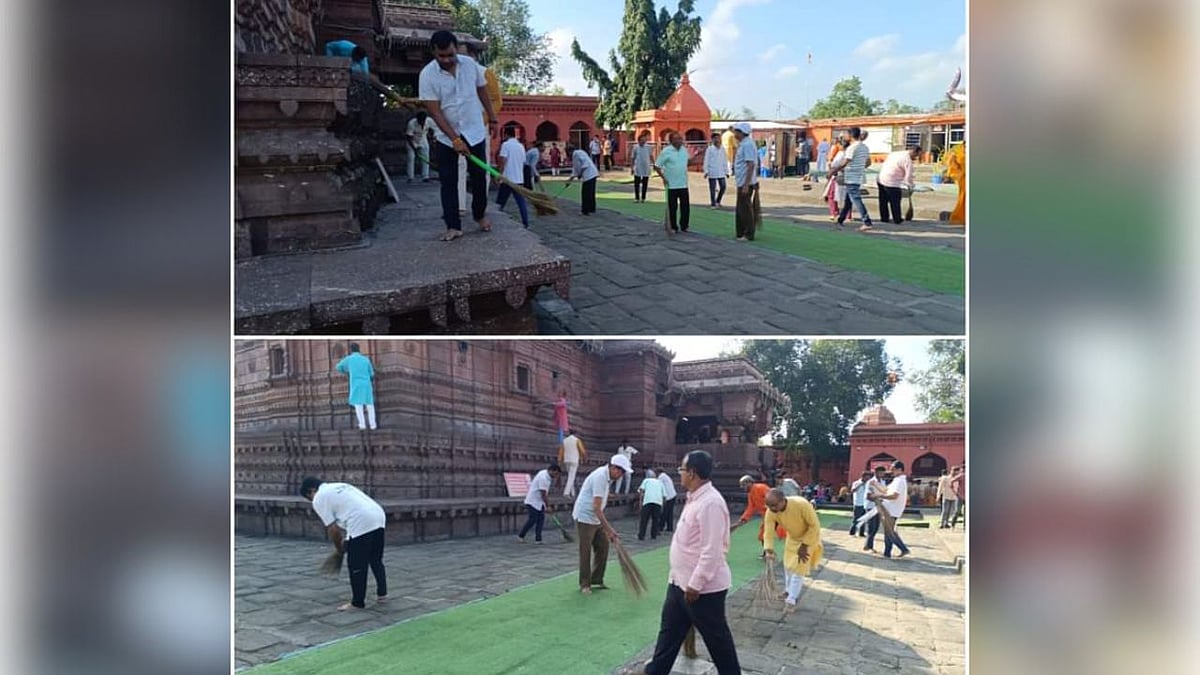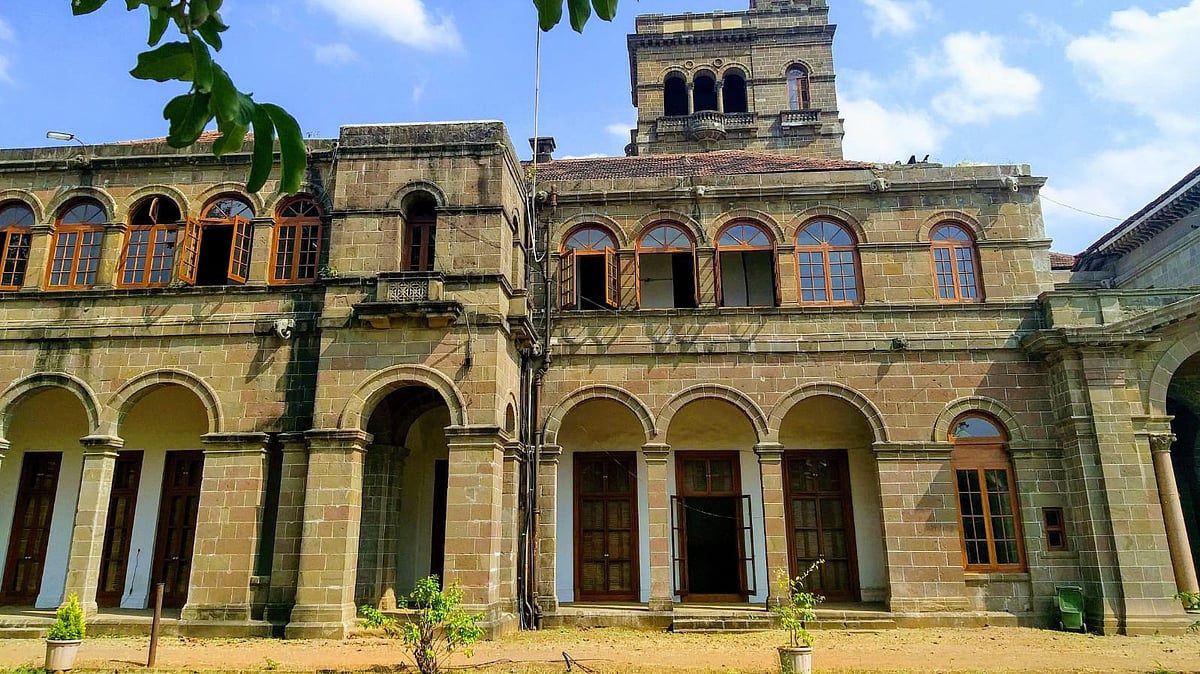For me, the mere mention of Chhath puja invokes a warm glow of lingering nostalgia and an unquenchable yearning to return to the fragments of good times, when my hometown Deoghar, became a sacred place to live.
It conjures up vivid images of spruced up ghats bedecked with numerous canopies of five sugarcane stalks symbolising Pancha Tattva (Earth, Air, water, fire, and Space), multiple four-cornered platforms earmarked for the puja by kith and kin of devotees that were decorated with shimmering lights, dotted with clay and flour divas, arranged in rows and circles, adding the right note of sacredness to the atmosphere.
One could smell the aroma of traditional offerings like thekua wafting in the air and witness the fresh harvest of vegetables, fruits, and other natural products beautifully decorated in Daura and Suups.
A stream of people thronging to beaches, menfolk staying up all night guarding and decorating the ghats, and vratins dressed up in vibrant saris with vermilion powder smeared from their nose to the tip of their foreheads.

The sublime smell of chhath prasad (traditionally cooked on the chulhas, especially with mango wood) adding an aromatic fervour to the spirit with melodious devotional chhath songs of Sharda Sinha playing in the background, arousing surreal feelings of divine bliss. Chhath puja is a home coming and strikes a deep chord with the inhabitants of Bihar, Jharkhand, Odisha, Uttar Pradesh, and West Bengal.
This ancient Indian Vedic, four-day-long festival that commences two days after Diwali is celebrated with much gusto and fanfare and is touted to be one of the toughest and the most rigorous ones.
Chhath is dedicated to Sun and Chhathi Maiya, wherein devotees pay their obeisance to God Surya along with the Goddesses - Usha (first rays of the morning) and Pratyusha (last rays of the evening) for bestowing the bounties of life on earth as Sun is considered to be the primordial source of energy and life-force.
The Chhath festivities span across four days. On the first day of Chhath, devotees take a holy dip in the Ganges or other sacred water bodies and eat only one-time meal i.e., Kaddu-bhat (bottle gourd and rice) along with Chana daal.
One the second day, the devotee are required to fast the whole day and break it only after worship of the Sun God in the evening. Kharna puja concludes with puris along with jaggery laden kheer offered as prasad. Right after breaking the fast, devotees again go on a rigorous fast for the next 36 hours.
The most arduous third day of Chhath necessitates devotees to keep a rigid whole-day fast, where they neither consume food nor water. On this day devotees offer Sanjhiya Araghya and pay gratitude to the Sun God for sustaining the life on the earth as well as to seek his divine blessings.
On the fourth day, the devotees break their long fast after offering prayers to the rising Sun, known as Bihaniya Araghya. Subsequently, the devotees break their 36-hour fast, and this ritual is also known as Paaran.
Spiritual significance
Chhath is made up of two Hindi words - 'Chah,' indicating six stages and 'Hath' representing the act of austerity. The vratti observing this strict fast is believed to acquire solar energy in six different stages.
The first stage involves complete detoxification of body and soul through rigorous 36 hours fast. In the second stage, the vrati stands half immersed in water during araghya offering of prayers to setting and the (Sanjhiya and Bihaniya, respectively), which elevates Sushumna, the central Nadi in the body that acts as the energy channel.
In the third stage, the cosmic energy gains entry into the pineal, pituitary and hypothalamus glands (popularly known as the Triveni complex) through the retina and optic nerves.
During the fourth stage, Triveni Complex gets activated, leading to polarisation of spine. Subsequently, in the fifth stage, the devotees’ latent psychic energy is invoked, thereby making them a cosmic powerhouse. The sixth and last stage results in the purification of the soul and body that equips the body to recycle and pass on the energy into the entire universe.
Scientific connotations and health benefits
Chhath Puja, the most scientific puja known to mankind, offers a host of health benefits. The rituals not only help in facilitating proper flow of blood and regulate proper functioning of the body, but also lead to detoxification of the human body, rejuvenation of the nervous system and purification of the mind thereby preparing the human body to receive optimum energy from the sun and effectively harness it during the time sunrise and sundown.
This process is called Photo energisation. Rigorous fasting transforms the body of the vratti (devotee) into a highly sophisticated energy conducting channels for cosmic solar-energy-infusion.
Offering prayers before the rising/ setting sun facilitates the entry of photons through the eyes (where retina acts as a photoelectric material) and the skin of the devotee and when it passes through the brain, it generates bioelectricity that charges the entire body with the solar energy. This process is quite similar to what sages used to undergo in the bygone days for their sustenance.
The Chhath rituals are formulated in a way that they guarantee maximum absorption of Vitamin D and Calcium into the devotee’s body and induce a balanced secretion of the hormones.
Sun worship in Kartik month is considered to be highly beneficial for the intake of Vitamin D that comes from UVB rays. Chhath Puja, apart from cleansing and detoxifying the body, also serves to boost the body's immunity system.
The benefits of Chhath puja are not confined to physical well-being. Womenfolk sing folk songs that lead to quietening the mind and calming the soul. During the puja process, a therapeutic calmness prevails, which wards off negative energies from the body and regulates the Pranic flow that helps in eliminating negative emotions and toxic thoughts.
Most eco-friendly festival
At a time when air pollution has assumed alarming proportions, all one wants is to worship mother nature in the most sacred way without adversely impacting the environment. What makes Chhath stand out is the fact that the entire festival revolves around nature as all the items needed to observe the festival are naturally procured.
The articles used in rituals, including Daura and Suup are made of bamboo, which is biodegradable. Since there is no temple ceremony required, as all rituals are performed on the riverbank, lake-shores, or near other water bodies.
Besides, there is a strict prohibition on the use of kerosene or LPG to cook edibles for prasad during Chhath, which further lessens the carbon footprint.
Not to forget the pious practice of cleaning up water bodies and the riverbank and strict ban on the use of synthetic material, chemical dyes, or plaster of Paris, making it the most eco-friendly festival. Chhath is arguably the only Hindu festival in which only natural products are used.
Chhath, for me, is not just a festival, but a pure visual delight and an occasion evoking nonpareil camaraderie and surreal spiritual experience.
(Chhath Puja 2019 is celebrated fromOctober 31 till November 3)





